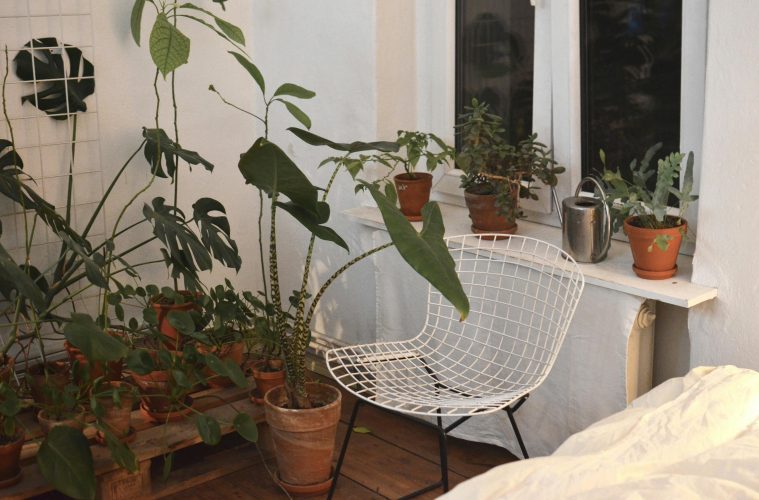Sun, breeze and warm nights can supercharge growth, colour and flowering. They can also scorch leaves, invite pests and stress roots if you rush the move. Here is the smart, plant-safe way to give houseplants a summer holiday outdoors.
The short answer
Yes, many houseplants thrive outside if you introduce them gradually. Wait until all frost risk has passed and nights stay above about 10 to 12°C. Harden off for 7 to 14 days in bright shade before any direct sun.
Why it helps
Outdoor light is stronger and more even than any windowsill, so growth is sturdier and colour improves. Humidity is often higher, which suits foliage that crisps indoors. Fresh air reduces mildew and occasional rain rinses dust and salts from leaves.
Who enjoys a summer outside
After hardening, sun lovers such as citrus, gardenia, hibiscus, rosemary, desert rose, plumeria, cacti and most succulents can take gentle morning sun, building to 6 to 8 hours if they tolerate it.
Monstera, philodendron, pothos, peace lily, ferns, calathea, peperomia, syngonium, ZZ plant and snake plant prefer bright, dappled shade under a tree, a pergola or 50% shade cloth.
Citrus, chillies and compact tomatoes reward real sunshine with better flowering and fruiting.
Who should stay in
Very large climbers that are hard to move safely are better left indoors. Delicate foliage that already looks good inside, for example some calathea and maranta, may scorch outdoors. Orchids in active bloom should only be moved if you can match their light and humidity.
How to harden off without drama
Pick a settled week with nights above 10 to 12°C. Start with three to four hours in sheltered, bright shade on day one, protected from wind and midday sun. Add an hour or two each day and increase brightness slowly. Introduce gentle morning sun first and avoid harsh midday rays.
Water a little more often, as outdoor pots dry faster. Water when the top two to three centimetres feel dry and make sure drainage is free. Feed lightly with a balanced, slow-release fertiliser at the start of summer and avoid overfeeding newly moved plants.
Leaves sunburn once; they do not tan. Brown, crisp patches mean too much light too soon. Step back to shade, then resume more slowly.
Pests, weather and other risks
Scorch and windburn are the main hazards, so use dappled shade and shelter from prevailing winds. Rotate pots weekly for even light.
Aphids, spider mites, mealybugs and thrips are more common outside. Inspect weekly on both leaf surfaces and treat early with a mild soapy water or horticultural oil spray in the evening, keeping spray off open flowers.
Heavy rain can leach nutrients and waterlog pots. Raise containers on feet, check drainage holes and refresh a light mulch of bark chips or coco coir to slow evaporation. Keep toxic plants out of reach of pets and secure top-heavy pots.
Potting mix and container tweaks that matter
Repot rootbound plants before the move if roots circle the pot. Loosen indoor compost with perlite or fine bark for better drainage and airflow. Terracotta improves root aeration and dries faster, while plastic conserves water. Choose what suits the plant and your climate.
When and how to bring them back in
Start reversing the process two to three weeks before cool nights return. Prune tatty foliage, hose plants thoroughly, including pot sides and saucers, and check for hitchhikers. Treat pests outdoors, then move in. Step down the light by parking plants in your brightest indoor spot for a week before shifting to winter positions. Reduce watering, pause feeding and raise humidity for tropicals.
Mistakes to avoid
Do not put plants straight into full sun after months indoors. Do not forget wind exposure, which dehydrates as fast as heat. Do not let saucers hold water after rain. Do not fertilise weekly by default, as this drives weak, pest-prone growth.
A quick decision guide
If you want fruit or flowers, move them out.
If a foliage plant is leggy indoors, try a shaded summer outside.
If it is a huge, thriving specimen that is difficult to shift, leave it in place.
If you cannot commit to checks and watering, keep the collection inside.
Bottom line: a summer outdoors can transform houseplants if you harden off, place well and keep up the checks. Go slow, watch the leaves and let the weather do the rest.
A version of this article was first shared on Women&Home.
ALSO SEE:
Create harmony at home: Feng Shui your entryway for positive vibes
Featured Image: Pexels

